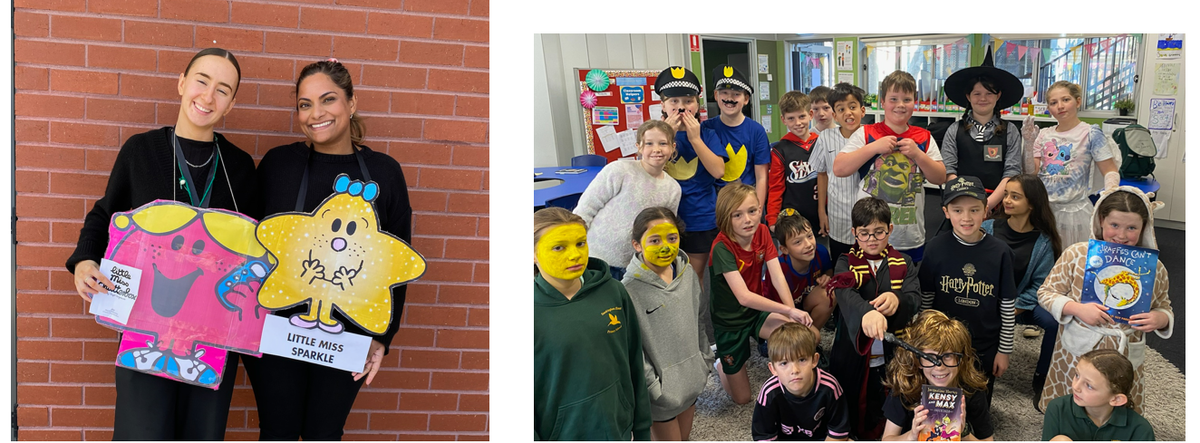Teaching and Learning
By Trudy Gau

Teaching and Learning
By Trudy Gau
Student Learning Experiences
Our AToSS (Attitudes to School Survey) data that was completed a few months ago by our students, showed that student engagement is an area that we need to work on. This is common across schools and an area that we are working hard to improve.
One of the techniques that we are implementing is increasing OTRs (Opportunities to Respond) for the students. Students are being asked to share their thinking, ideas and understandings as often as possible through teacher questions which keeps the students on task and engaged. These opportunities result in positive behavioural and academic outcomes. into the students' learning and understanding of the topic(s) being taught.
Book Parade
This week saw the fabulous book parade on Thursday - what an amazing effort by everyone. The fun and laughter that was experienced during the parade was magical. We're looking forward to our Special Friends' afternoon tea next week and the book fair.


AMC Maths Competition
I have had a number of people ask me about when the results will be out for the AMC competition. I usually get them in October, so we'll be expecting them early next term.
Staff Learning Experiences
Maths Curriculum Day
On Monday 12th August we had a Maths Curriculum day, with a guest presenter, Renee Ladner, a consultant from the Mathematical Association of Victoria. During the day, the staff spent some time working on the relationship between the Big Ideas in maths and the new 2.0 Victorian Maths Curriculum. In the new curriculum, importance is placed on a person's disposition towards maths and developing their skills to become resilient and flexible problem solvers. We also did some work around strategies that support students to solve problems that relate to challenges found in everyday life - the term used for this in the Victorian Curriculum 2.0 is modelling. The staff did some work on what modelling may look like and how to incorporate opportunities to solve authentic problems that involve applying modelling situations.
We also continued our work on developing staff understanding and capacity to teach using the Concrete, Representation, and Abstract approach. In order for students to learn concepts and successfully retain what they have learnt, it is important that they receive multiple exposures and make connections. Research has shown that connections between concrete materials, visual representations and ultimately linking this to efficient abstract ways of solving calculations has a higher success rate for learned concepts to be transferred to long term memory - which is all about reducing the cognitive load of our students.
Orton Gillingham Morphology Training
We were extremely lucky to send 4 members of staff to attend an Yoshimoto Advanced Morphology course at Chelsea Heights Primary. Some of the key takeaways from this day were to: